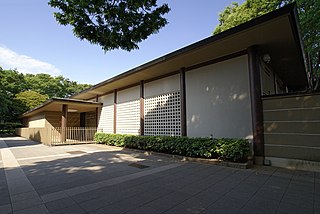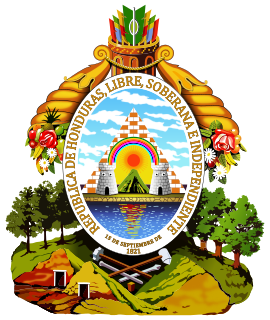The Canada Council for the Arts, commonly called the Canada Council, is a Crown corporation established in 1957 as an arts council of the Government of Canada, acting as the federal government's principal instrument for funding public arts, as well as for fostering and promoting the study & enjoyment of, and the production of works in, the arts.

The minister of Canadian heritage is the minister of the Crown who heads Canadian Heritage, the department of the Government of Canada responsible for culture, media, sports, and the arts.
A culture minister or a heritage minister is a common cabinet position in governments. The culture minister is typically responsible for cultural policy, which often includes arts policy and measures to protect the national heritage of a country and cultural expression of a country or subnational region. This responsibility usually manifests in the accompanying ministry, governing the following:

The Agency for Cultural Affairs is a special body of the Japanese Ministry of Education, Culture, Sports, Science and Technology (MEXT). It was set up in 1968 to promote Japanese arts and culture.

The National Commission for Culture and the Arts of the Philippines is the official government agency for culture in the Philippines. It is the overall policy making body, coordinating, and grants giving agency for the preservation, development and promotion of Philippine arts and culture; an executing agency for the policies it formulates; and task to administering the National Endowment Fund for Culture and the Arts (NEFCA) – fund exclusively for the implementation of culture and arts programs and projects.

Japan Art Academy is the highest-ranking official artistic organization in Japan. It is established as an extraordinary organ of the Japanese Agency for Cultural Affairs in the thirty-first article of the law establishing the Ministry of Education, Culture, Sports, Science and Technology. The Academy discusses art-related issues, advises the Minister of Education, Culture, Sports, Science and Technology on art-related issues, and promotes arts in three categories: 1) fine art, 2) literary arts, 3) music, drama, and dance. It is closely associated with the annual Japan Art Academy Exhibition (Nitten), the premier art exhibition in Japan; the Japan Art Academy originally ran the Nitten but since 1958 the exhibition is run by a separate private institution. The Japan Art Academy headquarters is in Ueno Park, Tokyo.
Arts administration is a field in the arts sector that facilitates programming within cultural organizations. Arts administrators are responsible for facilitating the day-to-day operations of the organization as well as the long term goals by and fulfilling its vision, mission and mandate. Arts management became present in the arts and culture sector in the 1960s. Organizations include professional non-profit entities. For examples theaters, museums, symphonies, jazz organizations, opera houses, ballet companies and many smaller professional and non-professional for-profit arts-related organizations. The duties of an arts administrator can include staff management, marketing, budget management, public relations, fundraising, program development evaluation, and board relations.

The Ministry of Culture and Sport (MCD) is the department of the Government of Spain responsible for the promotion, protection and dissemination of the Spanish historical heritage, national museums, art, books, reading and literary creation, of cinematographic and audiovisual activities and of state archives and libraries.

The Ministry of Culture of the Republic of Lithuania is a governmental body of the Republic of Lithuania. Its mission is to formulate and implement state cultural policies supporting professional and amateur art, theatre, music, fine arts, cinema, museums, libraries, and written publications, to guard copyright and copyright-related interests, and to protect cultural values.
Art of Cesar Department refers to the expressions of art in the Colombian Department of Cesar in the Caribbean Region of Colombia. The diverse range of human activities and artifacts, painting, sculpture, printmaking, musical and dance expressions, literature and other forms of visual and auditory arts.

The Ministry of Culture is the ministry of the Government of Italy in charge of national museums and the monuments historiques. MiC's headquarters are located in the historic Collegio Romano Palace and the current Minister of Culture is Dario Franceschini.
Ella Baff is a consultant for arts and culture and works with a wide range of cultural organizations, artists, producers, philanthropists and funders.
The Alberta Foundation for the Arts (AFA), based in Edmonton, is a Crown Agency of the Government of Alberta. As the primary arts funding body in Alberta, it plays a key role in supporting the Spirit of Alberta, Alberta's Cultural Policy. The AFA exists to fund, encourage, and support the development of the arts as a valuable contributor to quality of life in Alberta and, to develop the AFA art collection as a cultural resource for all Albertans.
The Qurain Cultural Festival is Kuwait's leading arts festival, founded in 1994. It is sponsored by the National Council for Culture, Arts and Letters, Kuwait and its purpose is to enhance the artistic and cultural movement in Kuwait. It includes theatre performances, literary events, the exhibitions of the visual arts and other cultural events.

The Ministry of Culture of Ukraine or MinCult is the main state authority in the system of central government of Ukraine responsible for country's cultural development and history preservation. It is fully based on the former Ministry of Culture and Tourism. The Honcharuk Government merged the Ministry of Youth and Sports into the ministry. But its succeeding Shmyhal Government undid this merge.

Qatar Museums is a Qatari government entity that oversees the Museum of Islamic Art (MIA), Mathaf: Arab Museum of Modern Art, MIA Park, QM Gallery at Katara, ALRIWAQ DOHA Exhibition Space, the Al Zubarah World Heritage Site Visitor Centre, and archaeological projects throughout Qatar, as well as the development of future projects and museums that will highlight its collections across multiple areas of activity including Orientalist art, photography, sports, children's education, and wildlife conservation.

The Republic of Honduras is organized according to Title I: On the State of the Honduran Constitution of 1982. According to Title V: Branches of the Government, the three administrative branches are the legislative, executive and judicial. The legislative branch is the Congress of Deputies, which is elected by direct vote. Executive power is held by the president or, in the event of their death, by the vice-president. The judicial branch is composed of a supreme court, a court of appeals and other courts specified by the law.
The Escuela Nacional de Bellas Artes is the main center of education and training of artists in the republic of Honduras.

The Ministry of Education and Vocational Training (MEFP) is the department of the Government of Spain responsible for proposing and carrying out the government policy on education and vocational training, including all the teachings of the education system except university education, without prejudice to the competences of the National Sports Council in matters of sports education. Likewise, it is also the responsibility of this Department the promotion of cooperation actions and, in coordination with the Ministry of Foreign Affairs, the promotion of international relations in the field of non-university education.
The Figari Award is given annually to visual artists from Uruguay in recognition of their careers. It was instituted in 1995 by the Central Bank of Uruguay, at the initiative of the then president of the institution, economist and sculptor Ricardo Pascale. Since 2010, the organization of the award has been in the charge of the Museo Figari, under the National Directorate of Culture (DNC) of the Ministry of Education and Culture (MEC).











